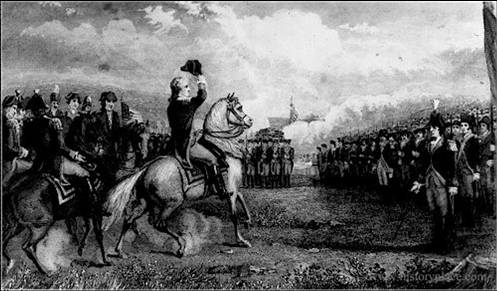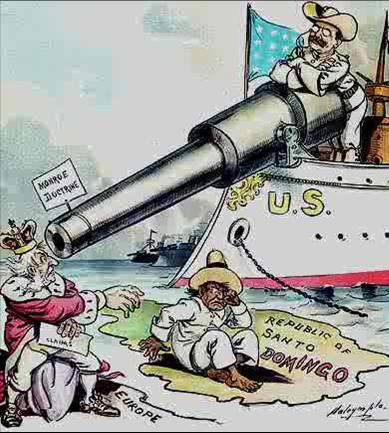APUSH Summer Assignment 2 -- due August 2:
Submit answers to montclairapush@hotmail.com only.
ID\SIGs: BAILEY CHAPTER 4-6, pp. 64-121
Ch. 4
American Life in the Seventeenth Century
Pgs. 64-81
William Berkeley
Nathaniel Bacon
Indentured servitude
Slave codes
Headright system
Jeremiads
Middle passage
Bacon’s Rebellion
Half-Way Covenant
Leisler’s Rebellion
Ch. 5
Colonial Society on the Eve of Revolution
Pgs. 82-103
Jonathon Edwards
Benjamin Franklin
George Whitefield
John Peter Zenger
Phillis Wheatley
Paxton Boys
Great Awakening
Regulator Movement
old and new lights
Molasses Act
Ch. 6
The Duel for North America
Pgs. 105-121
Samuel de Champlain
William Pitt
Robert de la Salle
James Wolfe
Edward Braddock
Pontiac
Huguenots
French and Indian War
Albany Congress
Proclamation of 1763
Study Questions: ZINN CHAPTER 2 & 3
ZINN CHAPTER 2
1. According to Zinn, what is the root of racism in America?
2. Why were Africans considered "better" slaves than Indians in Virginia?
3. How did 16th century Africa compare to 16th century Europe politically, economically, and militarily?
4. How did slavery in Africa differ from slavery in Europe and the Americas?
5. Describe the conditions that slaves on ships coming to America ("Middle Passage").
6. What was the position of the Catholic church in Portugal vis-à-vis slavery?
7. In terms of mortality, what was the cost of slavery?
8. What was the relationship between slavery and the plantation system.
9. What evidence exists that America’s slaves did not accept their fate easily?
10. Why did slave owners fear poor whites?
ZINN CHAPTER 3
1. What is Zinn’s thesis in this chapter?
2. What was the underlying cause of Bacon’s Rebellion?
3. What was the "double motive" of the Virginia government vis-à-vis Bacon’s Rebellion?
4. What groups of people took part in Bacon’s Rebellion?
5. Explain indentured servitude (also known as the "headright system").
6. How did the voyage of indentured servants to America compare with the "Middle Passage."
7. What generally happened to indentured servants after they became free?
8. To what extent did a class structure emerge in America by 1700?
9. What evidence does Zinn provide regarding the monopoly of power by the rich in Boston?
10. Explain the statement: "The country therefore was not "born free" but born slave and free, servant and master, tenant and landlord, poor and rich."
11. How did the rich manage to keep Indians "at a distance?"
12. What was the probable reason why Parliament made transportation to the New World a legal punishment for crime?
13. Explain the statement: "race was becoming more and more practical."
ID\SIGs: BAILEY CHAPTER 4-6, pp. 64-121
Ch. 4
American Life in the Seventeenth Century
Pgs. 64-81
William Berkeley
Nathaniel Bacon
Indentured servitude
Slave codes
Headright system
Jeremiads
Middle passage
Bacon’s Rebellion
Half-Way Covenant
Leisler’s Rebellion
Ch. 5
Colonial Society on the Eve of Revolution
Pgs. 82-103
Jonathon Edwards
Benjamin Franklin
George Whitefield
John Peter Zenger
Phillis Wheatley
Paxton Boys
Great Awakening
Regulator Movement
old and new lights
Molasses Act
Ch. 6
The Duel for North America
Pgs. 105-121
Samuel de Champlain
William Pitt
Robert de la Salle
James Wolfe
Edward Braddock
Pontiac
Huguenots
French and Indian War
Albany Congress
Proclamation of 1763
Study Questions: ZINN CHAPTER 2 & 3
ZINN CHAPTER 2
1. According to Zinn, what is the root of racism in America?
2. Why were Africans considered "better" slaves than Indians in Virginia?
3. How did 16th century Africa compare to 16th century Europe politically, economically, and militarily?
4. How did slavery in Africa differ from slavery in Europe and the Americas?
5. Describe the conditions that slaves on ships coming to America ("Middle Passage").
6. What was the position of the Catholic church in Portugal vis-à-vis slavery?
7. In terms of mortality, what was the cost of slavery?
8. What was the relationship between slavery and the plantation system.
9. What evidence exists that America’s slaves did not accept their fate easily?
10. Why did slave owners fear poor whites?
ZINN CHAPTER 3
1. What is Zinn’s thesis in this chapter?
2. What was the underlying cause of Bacon’s Rebellion?
3. What was the "double motive" of the Virginia government vis-à-vis Bacon’s Rebellion?
4. What groups of people took part in Bacon’s Rebellion?
5. Explain indentured servitude (also known as the "headright system").
6. How did the voyage of indentured servants to America compare with the "Middle Passage."
7. What generally happened to indentured servants after they became free?
8. To what extent did a class structure emerge in America by 1700?
9. What evidence does Zinn provide regarding the monopoly of power by the rich in Boston?
10. Explain the statement: "The country therefore was not "born free" but born slave and free, servant and master, tenant and landlord, poor and rich."
11. How did the rich manage to keep Indians "at a distance?"
12. What was the probable reason why Parliament made transportation to the New World a legal punishment for crime?
13. Explain the statement: "race was becoming more and more practical."
Subscribe to:
Post Comments (Atom)













No comments:
Post a Comment